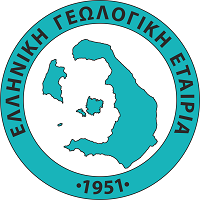Η εργασία αυτή μελετά τις φυσικές και χημικές παραμέτρους των νερών της λιμνοθάλασσας του Καϊάφα. Η μεταβολή της θερμοκρασίας ορίζει ως αναμένετο μια ψυχρή και μια θερμή περίοδο. Η μεταβολή της αλατότητας ορίζει σε αντιστοιχία προς τη ψυχρή και θερμή περίοδο περιόδους χαμηλής και υψηλής αλατότητας, ενώ καθ' όλη τη διάρκεια του έτους η λιμνοθάλασσα παραμένει υφάλμυρη. Επιπλέον απουσιάζει η οριζόντια ζώνωση της αλατότητας και στις δύο αυτές περιόδους. Οι τιμές pH κυμαίνονται σε φυσιολογικά επίπεδα για την υδρόβια ζωή. Το διαλυμένο οξυγόνο απαντά με χαμηλές τιμές στη διάρκεια του θέρους και του φθινοπώρου. Οι συγκεντρώσεις των θρεπτικών αλάτων δεν παρουσιάζουν χωρικές αλλά μόνο εποχιακές διακυμάνσεις. Οι συγκεντρώσεις των νιτρικών αλάτων βρίσκονται σε κανονικά επίπεδα, ενώ των νιτρωδών αλάτων είναι υψηλές στη διάρκεια της ψυχρής περιόδου και στο υπόλοιπο διάστημα του χρόνου χαμηλές. Οι τιμές της αμμωνίας είναι αυξημένες σε όλη τη διάρκεια του έτους και μπορεί να καταστεί τοξική για τα υδρόβια ζώα. Οι συγκεντρώσεις των φωσφορικών αλάτων είναι χαμηλές και μόνο στο τέλος του θέρους παρατηρούνται υψηλές τιμές στο νότιο τμήμα της λιμνοθάλασσας και παράλληλα ευτροφικές συνθήκες. Οι χωρικές και χρονικές μεταβολές των μελετηθέντων φυσικοχημικών παραμέτρων συνδέονται άμεσα με την εκφόρτιση στη λιμνοθάλασσα ενός ψυχρού και ενός θερμού καρστικού υδροφόρου ορίζοντα.
(EL)
The Kaifa lagoon is a coastal marine ecosystem located in the Kyparisiakos Bay. The purpose of this study is to: (a) To determine the spatial and temporal changes of the physicochemical parameters in the water column of the Kaifa lagoon and (b). To create a base of information for future use for the restoration of the lagoon. Temperature, salinity, pH and dissolved oxygen were measured insitu in 28 stations. Furthermore, water samples were taken for the determination of NO2, NO3, NH4 and PO4 on seasonal bnsin from November '94 to September '95. The temperature was fluctuating from 15,90 °C in March to 30,41 °C in late August and late September. Further the seasonal variation of the temperature showed the expected two thermal periods. The first period is a hot period showing a continuous increase of temperature from March to September. The second period is a cold period showing a continuous decrease of temperature from the September to March. For each period of sampling the temperature of lagoonal water in all the extent of the lagoon remains practically constant because the fluctuation of temperature is very small each time. The salinity varied between 7,2%o and 9,20%o. The salinity like the temperature presented seasonal fluctuation patterns but the lagoon is brackish all the year round. The spatial changes of salinity were absent for every sampling period. The pH values ranged from 6,70 to 8,40. So, the pH values fluctuated in the normal levels for aquatic animals. Further, these are relatively high in spring (arithmetic mean=7.8) owing probably to higher photosynthesis rate. Dissolved oxygen ranges from 3,30 mg/l to 10,00 mg/l. In the sampling periods of September and November the oxygen values were less than 7,00mg/l for a large part of the lagoon except southern margins. This evidence suggests dangerous conditions for the fish life. Phosphate concentrations were low (0,010 mg/l - 0,07 mg/l), in November. On the contrary the phosphate levels were high (on the average 0,111 mg/l) in the sampling period of September and in particular in the southern part of the lagoon. So, this part indicated photosynthetic activity. Further, In March the phosphate concentrations have an intermediate value for every sampling station in relation to the other sampling periods. Ammonia concentrations were considered high (0,24 mg/l - 2,68 mg/l) all the year round. Nitrate levels fluctuated around normal values (0,018 mg/l -0,11mg/l) during the year. The high amount of the ammonia nitrite and nitrate in November suggests the pollution of lagoon from the fertilizers into lagoon through two drainage canals. Nitrite concentrations were high during the cold period (0,041 mg/l - 0,280 mg/l). The spatial and temporal variability of the abiotic parameters of the lagoonal water must be attributed mainly to the strong influence of fresh water witch is discharged into the lagoon from a adjacent karst with hot springs.
(EN)

